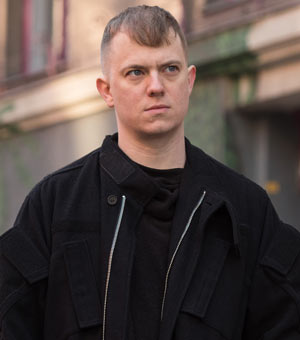Sperm is Everywhere: On “The Temptation of AA Bronson” at Witte de With, Rotterdam
by Travis Jeppesen on December 8, 2013
If it often feels as though a certain pathological narcissism has become so widespread as to be accepted as the normal mode of 21st century selfhood, then any gesture of generosity – of self-abnegation – warrants serious attention as the disruptive, and hence potentially critical force that it is. Further, in an era in which spirituality has been all but whitewashed by our deluded notions of “progress,” a notion that can never be justified, operating as it does beneath the accelerated entropy of hyper-capitalism, in which salvation sounds like a bad joke; then the affirmation-through-distortion of the One (the Me) into the Everyone serves as a valid and enthralling model for the eradication of those artificial barriers that keep individuals enslaved to the ego.
This is one summation of the path that AA Bronson has traversed since his journey began with General Idea, the artist group he founded with Felix Partz and Jorge Zontal in 1967, and it is the one that he has continued to widen with great integrity and persuasive force in the years since the group’s dissolution in 1994 when Partz and Zontal both succumbed to the plague. It is therefore reductive, and incorrect, to characterize the central impulse in Bronson’s work as “curatorial.” That his current solo exhibition in Rotterdam includes mostly the work of other artists suggests the permeability of that “of” in its title, “The Temptation of AA Bronson”; Bronson’s ‘I’ is many others; therefore, Bronson cannot be reduced to a mere I.
Rather, what the “Temptation” gives us is an expansion of AA Bronson in all his great reflexivity. Bronson the artist and curator, of course. But also: Bronson the shaman. Bronson the healer. Bronson the mentor to a generation of queer artists suffering from a broken lineage resulting from the AIDS years. Bronson the muse….(This is but a mere delineation, as many of these modes are often contained in within a single artwork, such as Reima Hirvonen’s dolls of Bronson and his omnipresent companion Mark Jan Krayenhoff van de Leur, made out of their underwear, reflecting the artist’s involvement with shamanism.) In a word, Bronson’s is the project of collaboration on an epic scale.
I suppose that some, perhaps being confronted head-on with Marina Abramovic’s crystal beds near the entrance of the exhibition, might have begun to ascribe a hippie New Age-ism to Bronson’s enterprise – until they arrived at the realization that sperm is everywhere. The motivating factor is sex – which is also of the spirit, mind you. And so we have, from the General Idea treasure trove, thirty untitled works from a series of tantric drawings dated from 1989 to 1992, taking up an entire room: an orgy of saggy tits and cocks and gaping orifices, barking prayers out from their two-dimensional cells. Sometimes a vag frowns at us, mocking our sense-making attempts at this altar of the body, while frequent uncircumcised elephant dongs dangle over quibbling goblin holes, some of which contain furnaces, promising to incinerate our longing with their flames. This is where the spiritual meets the corporeal. Not far from Abramovic’s healing rocks, we register Matthias Herrmann’s Cum Pieces, a series of photographic collages that all contain the same binding glue. Mike Kelley’s acrylic painting, The Death of the West, 2009, depicts a naked blue tranny with impossibly long tongue sticking out, its body decorated with skulls, shooting an impressively long jet of jizz that nearly reaches that aching tongue. In one hand, s/he holds a scythe, while the other grasps the head of what looks to be Richard Nixon. The whole thing is rendered in a joyous amateurishness, like the best thrift shop paintings, and inferring the influence of serial killer-turned-painter John Wayne Gacy.
But man-batter isn’t the only healing fluid on offer. I was incredibly moved by Sands Murray-Wassink’s Monument to Depression, two glass vitrines containing the artist’s perfume and cologne collection. These scents help him to get through his intense and frequent bouts with depression. I missed the series of performances that opened the exhibition, but apparently Murray-Wassink was there, naked sans for the words “Acceptance Art” scrawled across his chest, where he sweetly spoke to visitors and sprayed perfume on them – perhaps even making them feel better about themselves in the process.
My own personal healing came from an unexpected confrontation with some of the handmade digests waving offensive titles such as Faggo, rendered in black marker above drawings of dicks and pierced nipples, that published some of my earliest callous scribblings. In “Queer Zines,” an exhibition-within-the-exhibition Bronson co-curated with Philip Aarons, you could look (but not touch, as most of the more collectible ones, such as Vaginal Davis’s great ‘80s celebrity gossip rag Fertile LaToyah Jackson and Larry Bob’s queer punk gazette Holy Titclamps, were preserved under glass vitrines) at some of the last three or four decades’ prized emblems of fearless punk faggotry – of queer – a word that we might argue was validated just as much through these zines as in academic discourse. After waving goodbye at my teenage self, I made my way over to a wall display of some of the newer zines, which you are allowed to read and peruse. I discovered a brilliant new one from Japan called Ossu, which seems to be the work of a small group of friends, and is entirely photo-based. More pared-down but equally exciting are the Casual Encounters of Michael Max McLeod, who will, for instance, write “Some Computers and a Hustler” on his cover, and then with four pages give us exactly that: photos of computers, then suddenly a hustler appears. Crude and unrefined, it shows you the sad state of fag culture in the 21st century; now, cruising is only possible with a wifi connection.
A second exhibition within, “Ancestors,” its subject genealogy, lineage – something that young artists nowadays are often accused of forgetting about in their oblivious neomaniacal quests for instant bucks and glory. Here, in another set of glass vitrines, we find totemic entries of those who came before, some of whom brushed elbows with Bronson. Rarities like a Black Sparrow Press edition of Charles Henri Ford’s Flag of Ecstasy are displayed alongside Bronson’s correspondence with William S. Burroughs and a rare manuscript by the author, amended with a hand-written note from his secretary James Grauerholz asking that the manuscript be returned once they were done using it for General Idea’s great magazine FILE – a request that Bronson wisely ignored.
“Ancestors” is housed on the second story exhibition, which is permeated with the scent of rosemary, clumps of which fertilize the gallery floor for reasons I was unable to ascertain. Anyway, combined with the dim lighting and the prominent installation of TM Davy’s romantic painted portrait of Bronson nude in the forest, the exhibition is suddenly endowed with an enchanted aura that contrasts markedly with the more traditional white cube-and-fluorescent lighting of the lower level. The repeated melodies of Dolly Parton’s “I Will Always Love You” came from a video called The Dolly Shot by Mr. and Mrs. Keith Murray (one person, apparently); it is work like this that Bronson seems to favor, just on the verge of being corny or kitsch yet not quite crossing the line – a nude tranny lip-synching to Dolly’s ditty, recorded using a whitening effect that makes the body glow in a way that is pseudo-celestial (okay, camp.) Also, one came across Bronson’s collaboration with Terence Koh, a wooden cell divided by a wall with gloryhole – though sadly no one was on the other side on the day I attempted to use it.
On the publicity materials for the exhibition, Bronson lists the included artists in two categories: living and dead. Of course, in the actual exhibition, this serves as mere background information – it’s like there is no difference between the two. Still, there is something of a communion going on, and it feeds into Bronson’s interest in – his own private summoning of – shamanism. (This is fully articulated by an included photo credited to General Idea of a photo of Bronson-as-shaman dating from 1973.) Death as a happening force: without it, we could never speak of that eternal return or speculate on any means of transcendence. The most potent example in this regard is Bronson’s own sepia photographic triptych of Jorge, February 3, 1994, 2000, which witnesses Zontal’s emaciated, AIDS-wasted body staring out the window, perhaps at that very field we spend our lives trying to comprehend in vain, until in the end, it claims us without ever having reached it.
For those unable to summon the forest nymphs and faeries, the exhibition came with a more ready-at-hand guide in the form of a 43-page book called A more precise distance between the reader and the ultimate visions, a project by Gareth Long. Formally recalling The Divine Comedy, though on a much more complex spiritual level than Dante’s tripartite template, taking in as it does a multitude of spiritual perspectives and traditions, the work combines fictional excerpts from Bronson’s diary and hijacked bits of Flaubert’s The Temptation of Saint Anthony (from whence the exhibition hijacks its title), with a cast of the exhibiting artists alongside several of the gods and prophets from Flaubert’s original work. And really, it’s a fitting means of articulating the deification of both Bronson and the artists he has gathered around him, living and dead: a polytheism of the polyamorous. Amen.


2 comments
beautiful review–thank you–but “tranny” is not an OK word to use unless you’re RuPaul.
by hmm on December 11, 2013 at 1:32 am. #
Tranny is okay to use if you are a mechanic.
by bowel prep on December 15, 2013 at 2:00 pm. #